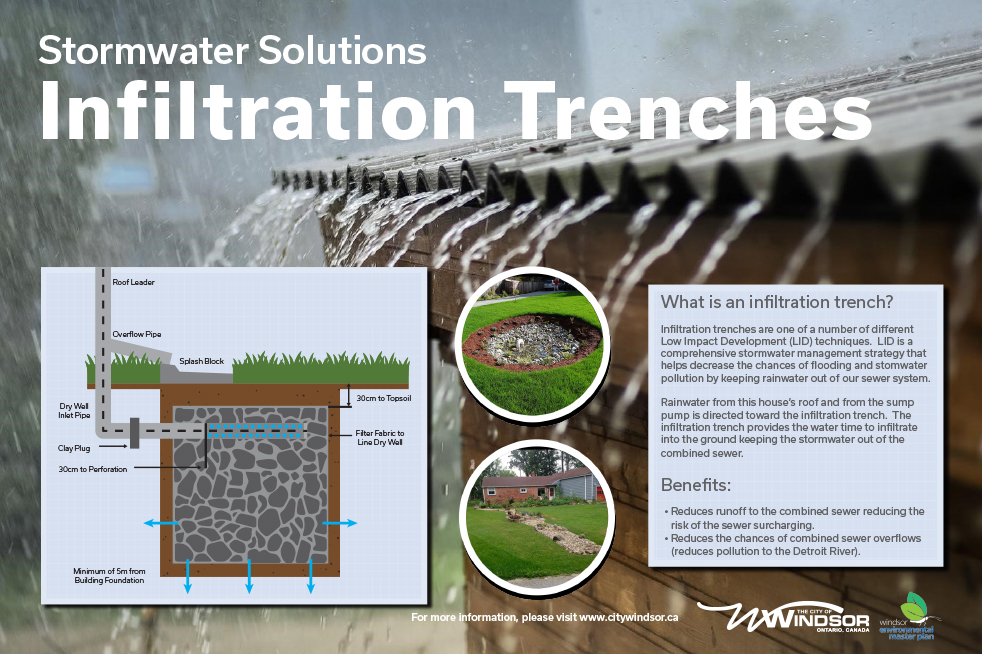Infiltration Trench
Infiltration Trench
Infiltration trenches are one of a number of different Low Impact Development (LID) techniques. The term Low Impact Development refers to systems and practices that use or mimic natural processes that result in the infiltration, evapotranspiration or use of stormwater in order to protect water quality and associated aquatic habitat and reduce the risk of flooding.
How Does an Infiltration Trench Work?
Infiltration trenches are rectangular trenches lined with geotextile fabric and filled with clean granular stone, creating temporary subsurface storage for stormwater runoff. Infiltration trenches can be designed to take stormwater directed from roof tops, driveways, parking lots, etc. This stormwater is stored in the voids between the stone temporarily. Over time, the stormwater will infiltrate into the natural soil around the infiltration trench.
Infiltration trenches can be used in residential, commercial, industrial, and high-density sites as stormwater reservoirs, reducing the risk of flooding.

Benefits:
- Reduces stormwater runoff to the City's sewer system reducing the risk of flooding.
- Improves water quality.
- Reduces the chances of combined sewer overflows (reduces pollution to the Detroit River).
Maintenance
Maintenance typically consists of cleaning out leaves, debris and accumulated sediment caught in pre-treatment devices, inlets and outlets, as needed. For the installation at the "Climate Resilient Home," inspection will be required to ensure that leaves do not block the downspout. This is required to minimize the risk of the infiltration trench clogging from debris.
For more information on environmental initiatives:
- Phone: For general information, call 311. For detailed inquiries, call 519-255-6100 ext. 6127.
- E-mail: emp@citywindsor.ca

